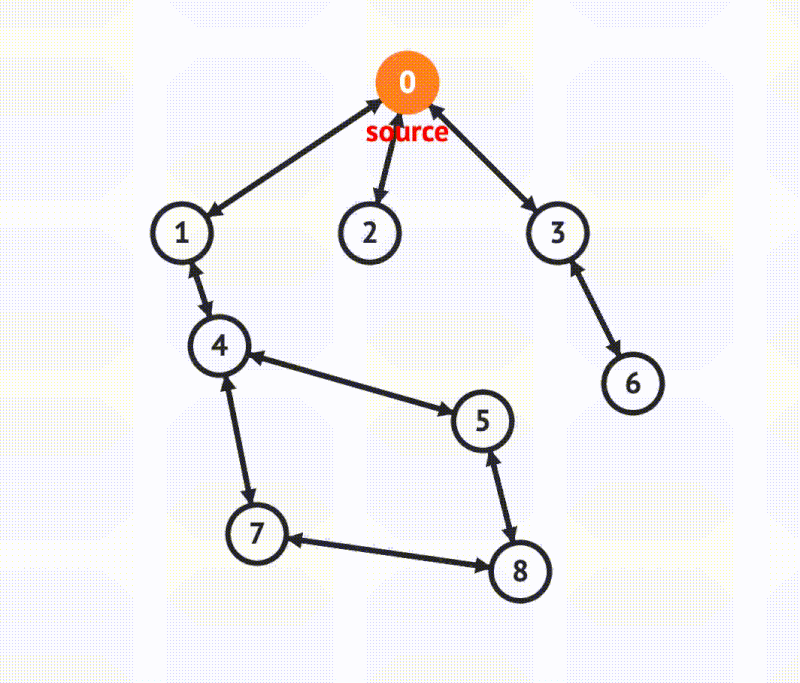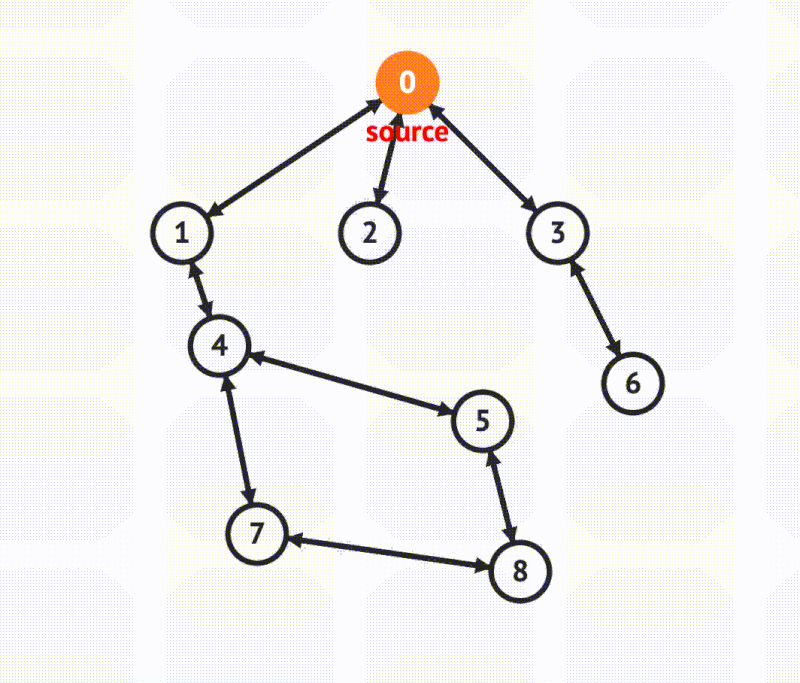-
Notifications
You must be signed in to change notification settings - Fork 3
Module 4 (Graph Traversal)
As the name implies, DFS will traversal to the deepest vertex. Every time you arrive at a vertex
An example of implementing in a weighted graph can be done iteratively like the following code:
void dfs(vector<long> &result, long start){
vector<bool> visited(vertexCount, false);
stack<long> st;
st.push(start);
visited[start] = true;
result.push_back(start);
while(!st.empty()){
long temp = st.top();
st.pop();
if(!visited[temp]){
result.push_back(temp);
visited[temp] = true;
}
for(auto vertex:adjList[temp]){
if (!visited[vertex])
st.push(vertex);
}
}
}
Traversal using BFS starts from a vertex, then will visit the vertex which is directly connected (neighbouring) to the vertex (layer 1). Then, in the next step we will visit vertex which is directly connected to vertex - vertex on layer 1 (layer 2) and so on until there is no more vertex that can be visited.
This is an iterative BFS implementation:
void bfs(vector<long> &result, long start){
vector<bool> visited(vertexCount, false);
queue<long> q;
q.push(start);
visited[start] = true;
result.push_back(start);
while(!q.empty()){
long temp = q.front();
q.pop();
for(auto vertex:adjList[temp]){
if (!visited[vertex]){
q.push(vertex);
visited[vertex] = true;
result.push_back(vertex);
}
}
}
}
Trivia question: in DFS, we tag the nodes before iterating over the contents of the adjacency list, whereas in BFS, we tag them in iterations. Does the timing of the placement of these marks affect the algorithms? If so, what effect would it have?

If we do BFS on the graph from vertex 1, the vertices for each layer are:
- Layer 0: 1
- Layer 1: 2 5
- Layer 2: 3 4
- Layer 3: 6
Note that the number of layers is the number of minimal edges that must be passed to get to the vertex from vertex 1 or so-called shortest path.
Modul Struktur Data
Ditulis oleh tim Asisten Struktur Data 2023 - Teknik Informatika ITS

